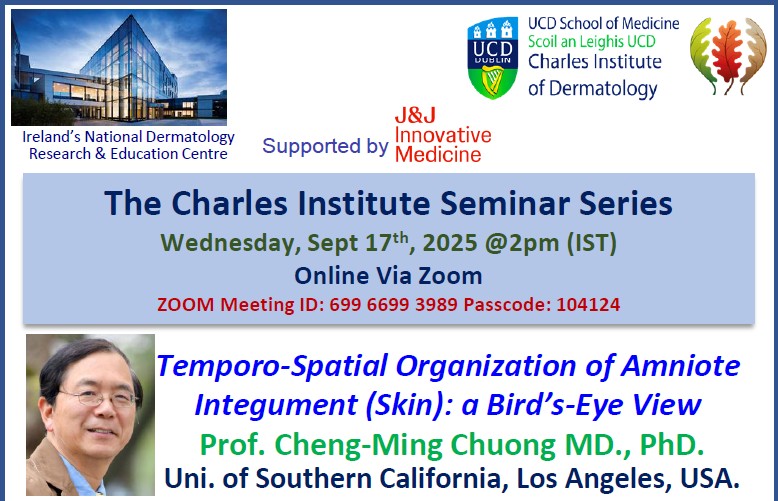Charles Institute Seminar Series 2025-26: ''Temporo-Spatial Organization of Amniote Integument (Skin): a Bird’s-Eye View'' by Guest Speaker Prof. Cheng-Ming Chuong MD., PhD.
Wednesday, 17 September, 2025
Share

Date of Talk: Wednesday, September 17th, 2025 @ 2 PM
Location: Online Via Zoom
Talk Title: Temporo-Spatial Organization of Amniote Integument (Skin): a Bird’s-Eye View
Speaker Details: Prof. Cheng-Ming Chuong MD., PhD. Uni. of Southern California, Los Angeles, USA.
Short Biography:
Dr Cheng-Ming Chuong received his MD from Taiwan University (1978) and PhD in Developmental & Molecular Biology from Rockefeller University (1983). He moved to the University of Southern California in 1988, where he is currently a professor of pathology. Ming directs the Laboratory of Tissue Development and Engineering. Using the integument as his research model, his lab learned how to guide stem cells in morphogenesis during development, regeneration, evolution, as well as stem cell engineering. He has promoted the "topobiology" concept; crucial for organization of biological architectures. Ming has published more than 290 papers (H-index 86) on the biology of integuments in top journals, incl. Nature, Science, & Cell. His work on the Evo-Devo of feathers contributed new understanding of “The Birth of Birds”, chosen by Science journal as one of the 10 major breakthroughs in 2014.
Abstract for talk:
During development and regeneration, distinct cell types coordinate morphogenesis and differentiation to assemble into higher-order tissue architectures. The avian integument offers a powerful model system for dissecting these principles, as it displays striking periodic patterning and remarkable diverse appendage form. Tissue interaction studies and single-cell technologies help achieve new understanding of underlying mechanisms. We focus on two representative aspects: the emergence of periodic patterns in developing chicken skin, and the temporo-spatial diversification of appendage phenotypes in chicken variants such as Polish and Phoenix. We highlight how cells self-organize via dynamic communication, and how crosstalk between biochemical signaling and biophysical forces shapes tissue patterns.